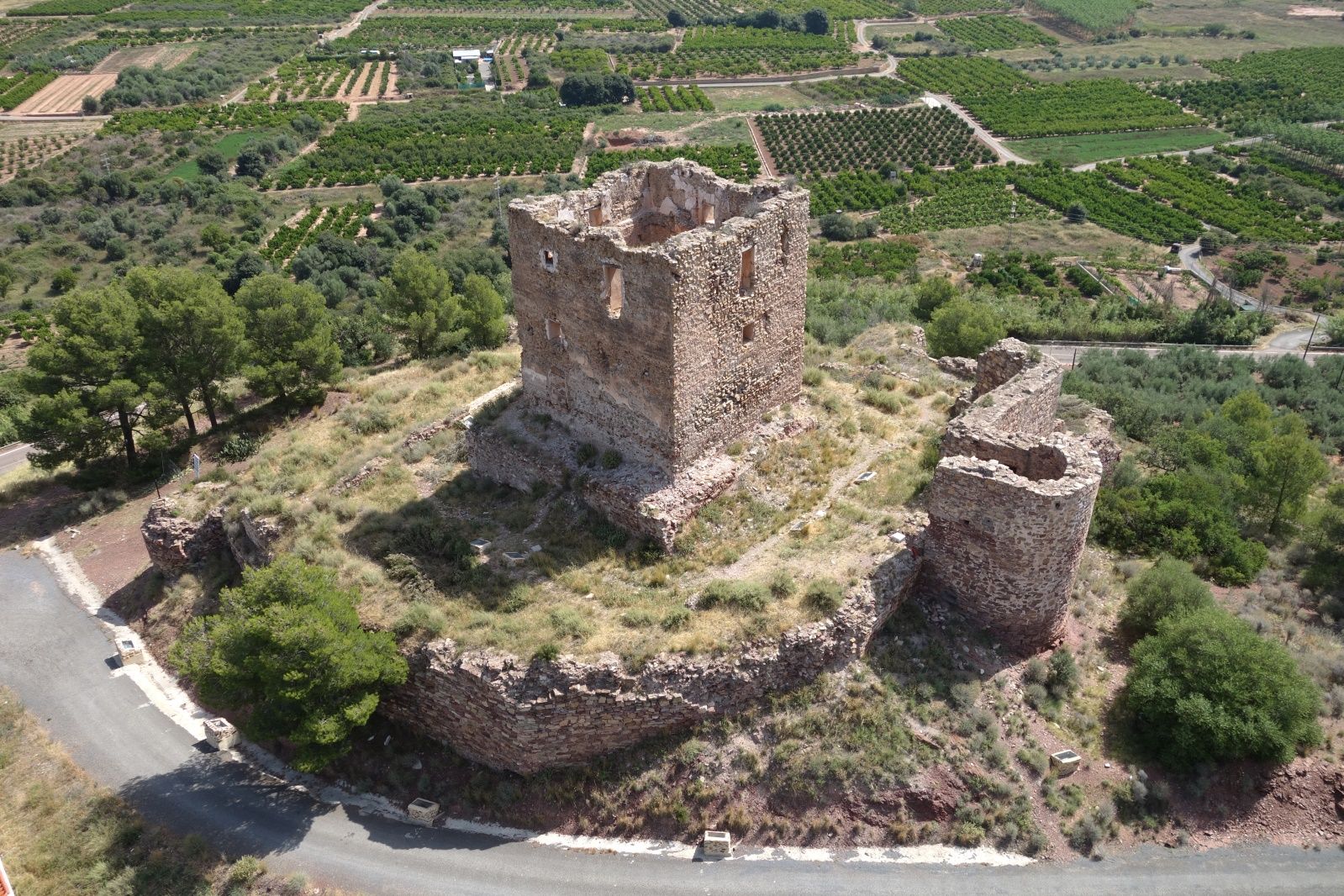Torres-Torres
Torres Torres is a small, quiet village located in the Valencian administrative region of “Camp de Morvedre” in the Palancia Valley, halfway between Sagunto and Segorbe and only 40 km from the city of Valencia. Its economy is based mainly on agriculture, and above all irrigation farming and orange growing. The hectares of dry land farming are divided between almond, carob and olive trees. The remaining land is hilly with scrub and pines
Gastronomy:
The most typical dishes include baked rice, paella, the typical Easter stew and “les llesquetes amb ou” (French toast).
Places of interest:
One of the few Arabic baths in the province of Valencia: connecting arches and rooms of stunning beauty and great interest.
The parish church of Our Lady of the Angeles, with Baroque tower and dome, the statue of the Nursing Madonna, the patroness of Torres-Torres, (possibly from the 15th-century).
Torres-Torres castle, which is of Muslim origin, was ceded to Beltrán de El Puig following the conquest by James I of Aragon. The castle has a polygonal layout, and certain paintings and parts of the wall have been conserved. Privately-owned, it is currently unrestored and in poor condition. The remains of a primitive, 13th-century church were found next to the castle. The first historical data relative to the church date from 1318.
The municipality also has a large amount of vegetation and places of incomparable beauty: “el Rabosero”, the mountain of the Hermitage, the Arabic baths, the water storage cistern and the castle’s surroundings, from which a landscape worthy of admiration can be contemplated.
Torres Torres was the last Valencian village to adopt the safe passage agreement established for the Route of El Cid. Thus, some 17 towns and villages in the province of Valencia had by then signed El Cid’s document: Alfara de la Baronia, Alzira, Beniatjar, Bocairent, Bufalí, Cullera, El Puig, Gandía, Montaverner, Oliva, Olocau, Ontinyent, Otos, Sagunto, Valencia, Xàtiva and now, Torres Torres, a municipality located next to the River Palancia and an area of transit between Valencia and the north-east of the peninsula.
Torres Torres’ relationship with El Cid dates back to 1088. During the spring of that year, El Cid, reconciled with King Alfonso VI, set off from Burgos to Valencia with a powerful troop. His knowledge of the area, accumulated during past campaigns, situated him as the ideal agent to probe the weaknesses of the kingdom and defend the interests of Castile in this troubled area. It was during this campaign, whilst heading for the capital, that El Cid set up his camp in Torres Torres. It is precisely this fact that has served as inspiration for the village seal, which was designed by Julian de Velasco, who was responsible for the design of the other seals in the collection. Visitors to Torres Torres – a village that forms part of the route of the Reconquest of Valencia – can obtain the seal in the Town Hall, located in C/La Virgen 40, from Monday to Friday from 8h to 15h.
Festivities:
As in many other towns and villages in Spain, the festivities of Torres Torres are celebrated during the month of September. Independently of the various recreational activities programmed in the days leading up to the official festivities, the days designated as public holidays fall between 7th and 10th September. The festivities’ activities include dances, a Manila shawl dance, a fancy-dress dance, Masses, parades and processions accompanied by bands.
The week prior to the village’s main festivities includes bull-running, play-back shows, and activities for children and the elderly.
Although the patron of the church is Our Lady of the Angels, the patron saint of the town is the Nursing Madonna, to whom the festivities of 8th September are dedicated. This day is considered as the main day of the festivities. The 9th September is also dedicated to the Virgin, under her title of Our Lady of Vallivana, while on 10th September the festivities area dedicated to the figure of Saint Roche.
The 31st December is a holiday in the village, as this is the date established by oral tradition on which the carving of the Nursing Madonna was discovered. It is celebrated with a large offering of flowers and the preparation of typical sweets.







